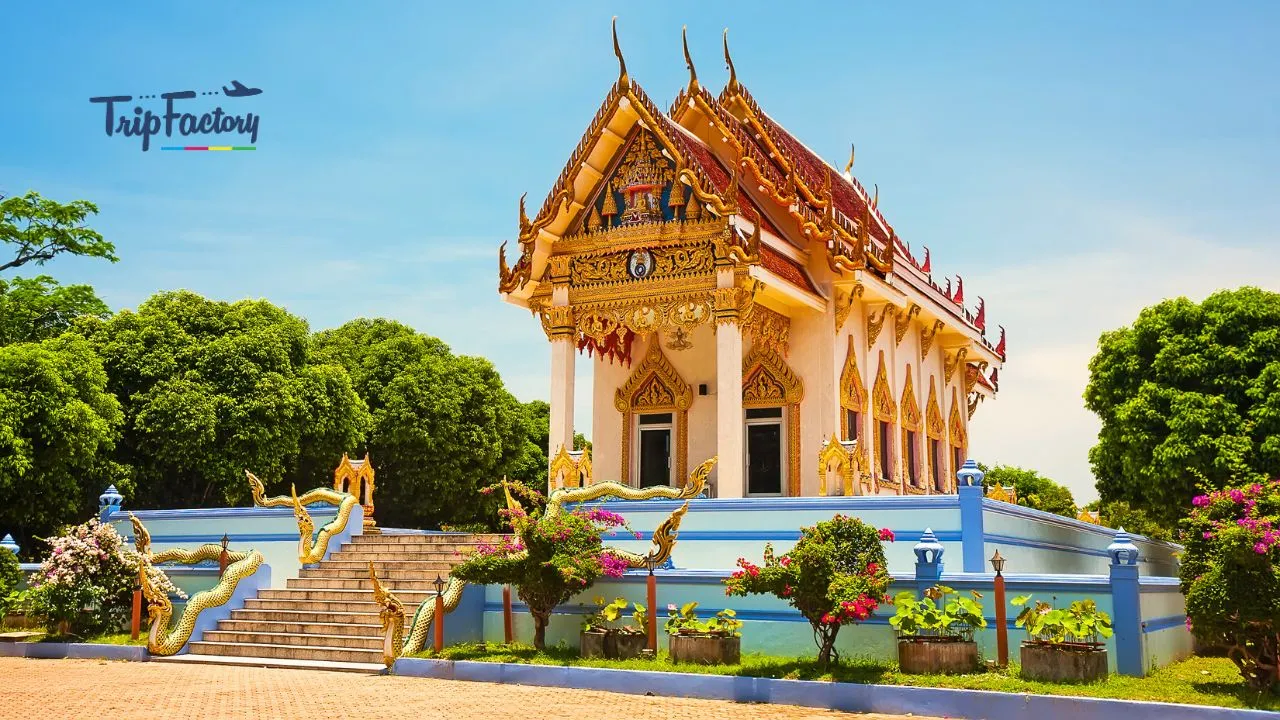Thailand is a country of natural beauty and vibrant culture, and its tropical climate makes it a year-round destination. However, July brings a unique blend of weather conditions that travelers should consider when planning their trip. During this time, Thailand’s weather in July offers tropical warmth, occasional rain, and lush landscapes, creating the perfect environment for exploring its stunning beaches, cultural sites, and outdoor adventures.
Table of Contents
Overview of July Weather
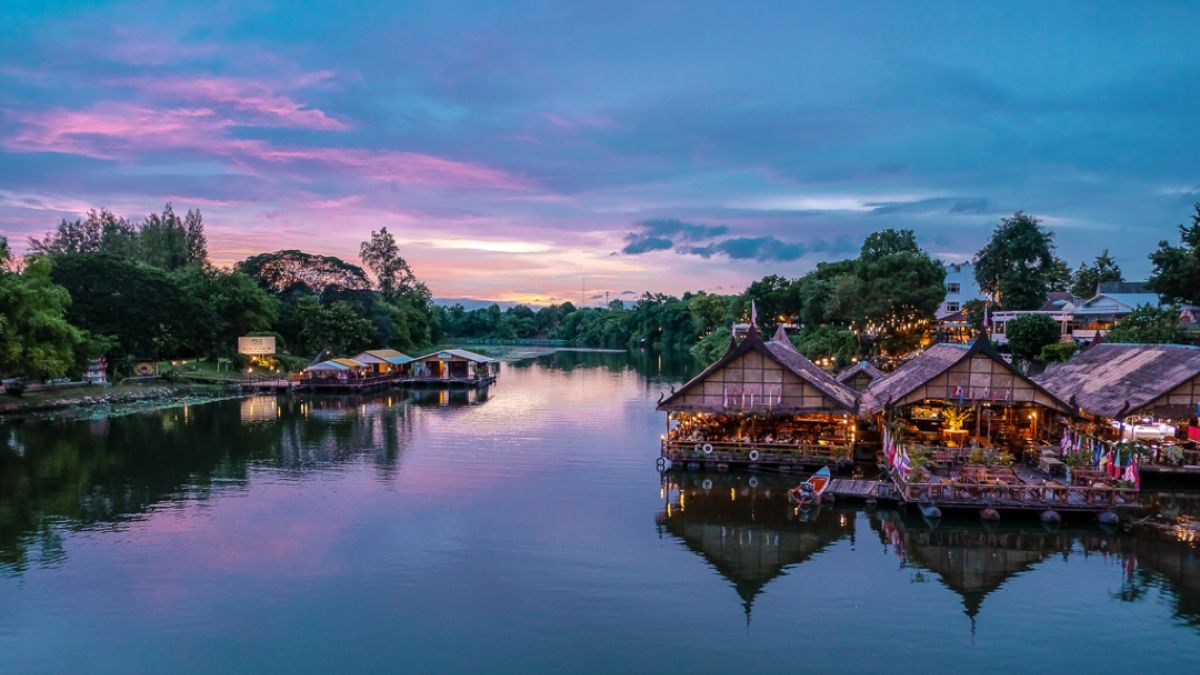
July falls in the midst of Thailand’s wet season, also known as the monsoon season. This period typically spans from May to October, with July experiencing moderate to heavy rainfall across most regions. The monsoons are influenced by the southwest monsoon winds, which bring moisture-laden air from the Indian Ocean.
Thailand’s weather in July remains warm, with average temperatures ranging from 25°C to 32°C (77°F to 90°F). The humidity is high, often exceeding 80%, making it feel warmer than the thermometer suggests. Rain usually comes in short, intense bursts, often in the late afternoon or evening, leaving mornings relatively dry and pleasant.
Regional Weather Variations
Thailand’s weather in July varies significantly by region, so it’s essential to know what to expect depending on your destination. Each area has unique weather patterns and opportunities for exploration, making it important to choose your destination wisely.
Bangkok and Central Thailand
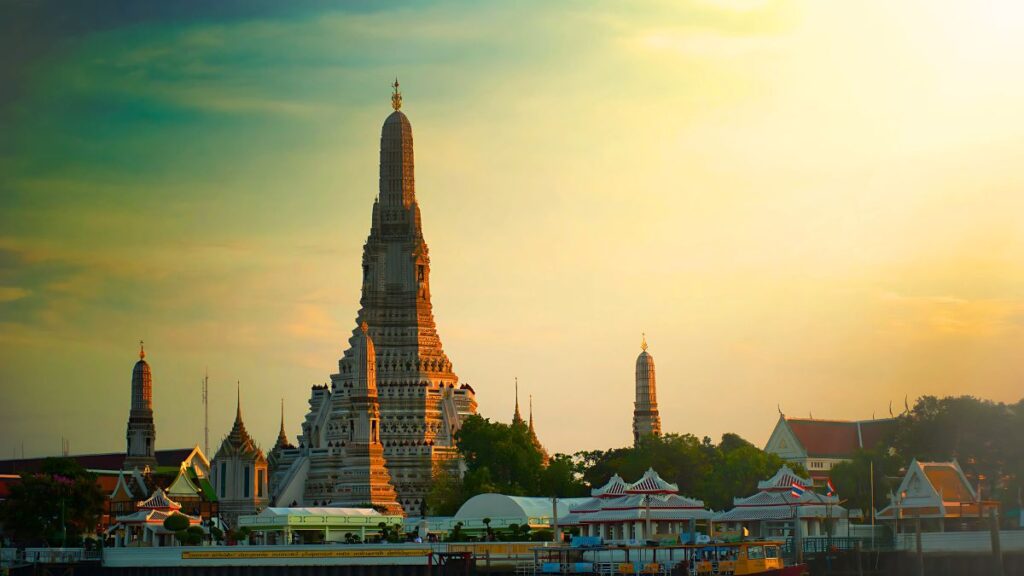
- Temperature: 26°C to 34°C (79°F to 93°F)
- Rainfall: Moderate to heavy rain, typically in the afternoons or evenings.
July falls in Thailand’s wet season, with moderate to heavy rainfall due to southwest monsoon winds. Thailand weather in July remains warm, with temperatures ranging from 25°C to 32°C.
In Bangkok and the central plains, brief downpours are common, but the city’s modern infrastructure ensures life continues uninterrupted. Indoor attractions like the Grand Palace and shopping malls provide great options during rainy weather.
Provinces like Ayutthaya and Kanchanaburi offer historical sites and scenic beauty enhanced by the rainy season.
Also Read: Thailand Weather in August
Best Places to Visit in Bangkok and Central Thailand
- Bangkok: The Grand Palace, Wat Pho, and vibrant shopping centers like Siam Paragon and MBK Center.
- Ayutthaya: Ancient ruins and UNESCO World Heritage Sites that showcase Thailand’s rich history.
- Kanchanaburi: The Bridge on the River Kwai and Erawan National Park, home to stunning waterfalls.
Northern Thailand (Chiang Mai and Chiang Rai)

- Temperature: 24°C to 32°C (75°F to 90°F)
- Rainfall: Moderate rain with occasional heavy showers.
July falls in Thailand’s wet season, with moderate to heavy rainfall due to southwest monsoon winds. Thailand weather in July remains warm, with temperatures ranging from 25°C to 32°C. In Bangkok and the central plains, brief downpours are common, while northern regions offer lush, scenic landscapes.
Northern Thailand’s mountainous regions are a highlight during July. The monsoon transforms the landscapes into a verdant paradise, making it ideal for photography and sightseeing.
Waterfalls like Bua Thong and Mae Sa are at their most impressive, while the rolling hills of tea plantations offer serene vistas. However, trekking and outdoor adventures may require caution due to slippery trails and leeches.
Best Places to Visit in Northern Thailand
- Chiang Mai: Doi Inthanon National Park, Wat Phra Singh, and the bustling Night Bazaar.
- Chiang Rai: Wat Rong Khun (White Temple) and the Golden Triangle.
- Pai: Known for its scenic landscapes, hot springs, and Pai Canyon.
Southern Thailand (Gulf Coast and Andaman Coast)
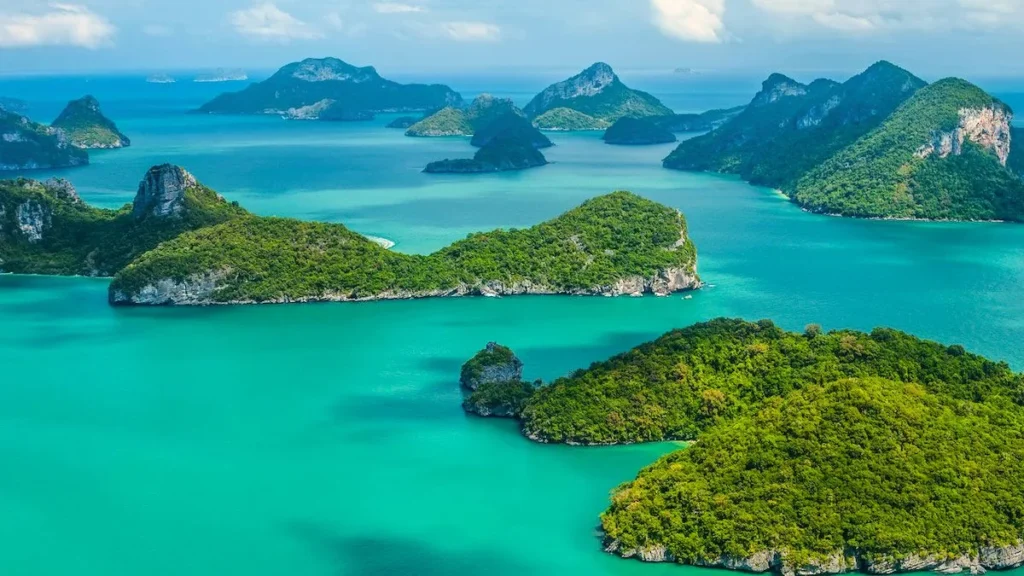
- Gulf Coast (Koh Samui, Koh Phangan):
- Temperature: 25°C to 31°C (77°F to 88°F)
- Rainfall: Lighter than other regions, making it a popular choice for beachgoers.
- Andaman Coast (Phuket, Krabi):
- Temperature: 25°C to 31°C (77°F to 88°F)
- Rainfall: Heavy rain with frequent thunderstorms.
July falls in Thailand’s wet season, with moderate to heavy rainfall due to southwest monsoon winds. Thailand weather in July remains warm, with temperatures ranging from 25°C to 32°C. In Bangkok and the central plains, brief downpours are common, while northern regions offer lush, scenic landscapes. The southern region offers contrasting weather patterns.
The Gulf Coast, including islands like Koh Samui and Koh Tao, enjoys relatively dry conditions, making it ideal for snorkeling and beach relaxation.
Best Places to Visit in Southern Thailand
- Gulf Coast: Chaweng Beach, Ang Thong National Marine Park, and Lamai Beach on Koh Samui.
- Andaman Coast: Phi Phi Islands, Railay Beach, and Phang Nga Bay.
- Phuket: Old Town Phuket and Big Buddha for cultural experiences.
Northeastern Thailand (Isaan)
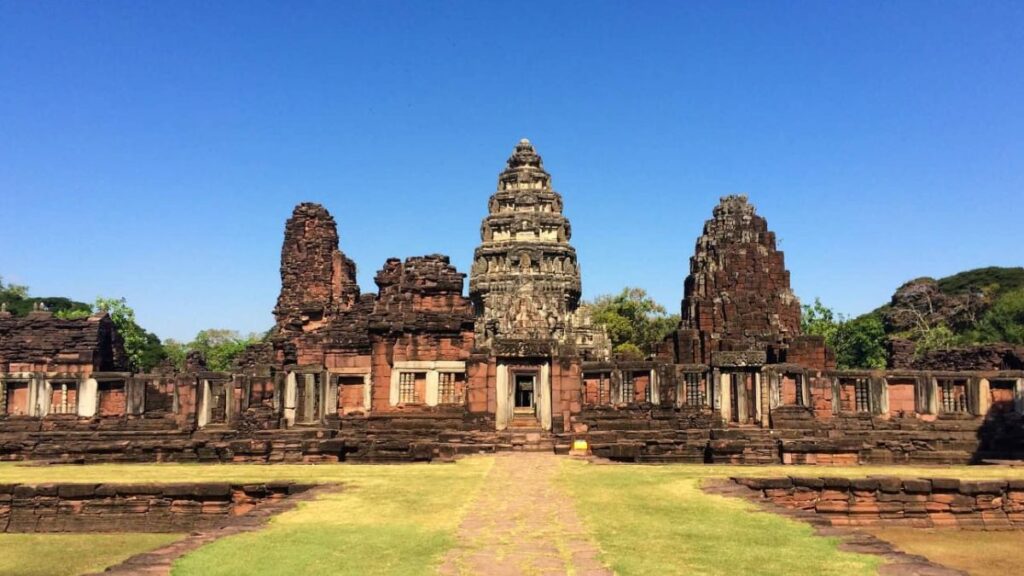
- Temperature: 25°C to 33°C (77°F to 91°F)
- Rainfall: Moderate to heavy rain.
Isaan, Thailand’s least-visited region, becomes a green haven during July. The vast rice paddies and Mekong River scenery are breathtaking at this time of year. Destinations like Nong Khai and Ubon Ratchathani host cultural festivals that provide a glimpse into traditional Thai life. While rural roads may become muddy, the sense of authenticity and tranquility makes it worth the effort.
Best Places to Visit in Northeastern Thailand
- Nong Khai: Scenic views of the Mekong River and Sala Kaew Ku sculpture park.
- Ubon Ratchathani: The Candle Festival and Pha Taem National Park.
- Phimai: The Phimai Historical Park with ancient Khmer architecture.
Also Read: Thailand Weather in September
Pros and Cons of Visiting Thailand in July
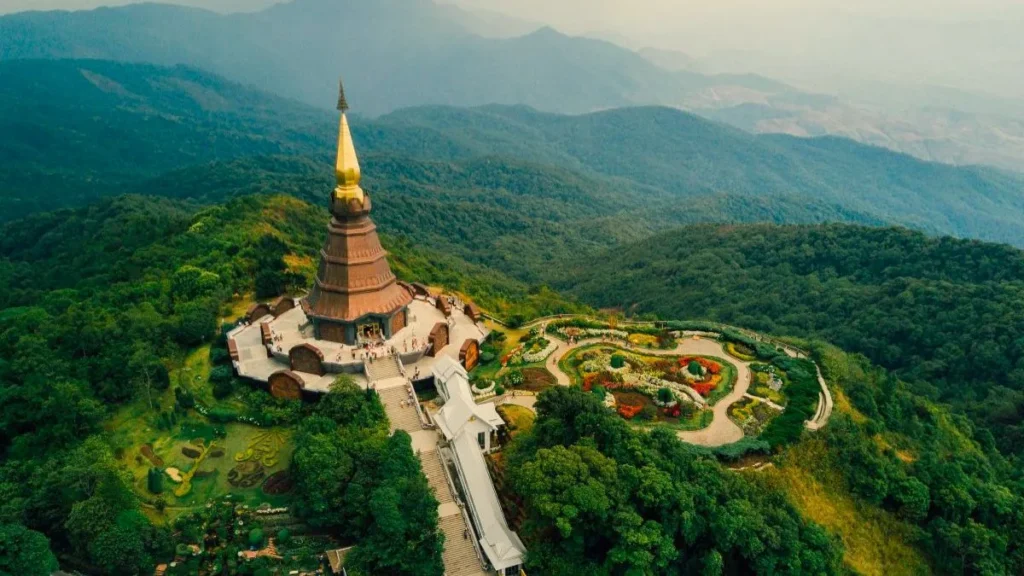
Pros:
- Fewer Crowds: July is considered the low season, so popular tourist spots are less crowded.
- Lush Landscapes: The rains bring out the best in Thailand’s natural beauty, with verdant forests and flowing rivers.
- Lower Prices: Many hotels and tours offer discounts during the monsoon season, making it a budget-friendly time to visit.
Cons:
- Unpredictable Weather: Rain can disrupt outdoor plans and transportation.
- High Humidity: The combination of heat and humidity can be uncomfortable for some travelers.
- Limited Activities: Certain activities, like snorkeling or trekking, may be restricted due to weather conditions.
Tips for Traveling in Thailand in July

- Pack Smart: Bring lightweight, breathable clothing, a good raincoat or umbrella, waterproof shoes, and insect repellent.
- Plan Flexibly: Be prepared to adjust your itinerary due to weather-related disruptions.
- Embrace the Indoor Activities: Explore Thailand’s rich cultural heritage by visiting temples, museums, and local markets.
- Check the Weather Forecast: Stay updated on daily weather conditions to make the most of your trip.
- Focus on the Gulf Coast: If beaches are your priority, consider the relatively drier Gulf Coast.
Conclusion
Thailand weather in July offers a mix of challenges and rewards for travelers. While the monsoon season brings frequent rain and high humidity, it also paints the country in lush green hues and ensures fewer crowds. Whether you’re exploring the bustling streets of Bangkok, hiking through the verdant mountains of Chiang Mai, or enjoying the relatively drier beaches of Koh Samui, July has its unique appeal. With proper planning and a flexible itinerary, you can embrace the beauty of Thailand during this season and create memories that last a lifetime.
Also Read: Thailand Weather in October
Frequently Asked Questions
Is July a good time to visit Thailand?

Yes, July can be a good time to visit Thailand if you are prepared for the wet season. The monsoon brings lush green landscapes and fewer crowds, making it ideal for exploring cultural and natural attractions. The Gulf Coast also tends to have less rainfall, making it suitable for beach vacations.
How much does it rain in Thailand in July?

Rainfall in Thailand during July varies by region but typically ranges from moderate to heavy. Rain usually occurs in short, intense bursts, often in the late afternoons or evenings, leaving mornings relatively dry and pleasant.
Are beaches accessible during July?

Yes, many beaches remain accessible in July. The Gulf Coast, including Koh Samui, Koh Phangan, and Koh Tao, experiences lighter rainfall, making it a great choice for beachgoers. However, the Andaman Coast, including Phuket and Krabi, may experience rough seas and frequent rain.
What should I pack for Thailand in July?

Pack lightweight, breathable clothing suitable for tropical weather. Include a good raincoat or umbrella, waterproof shoes, quick-dry clothing, and insect repellent. Don’t forget swimwear if you plan to visit beaches.
Can I go trekking in Thailand in July?

Yes, but trekking conditions depend on the region. In northern areas like Chiang Mai and Chiang Rai, trails may be muddy and slippery due to rain, so proper gear and caution are essential. Guides are recommended for safety.

